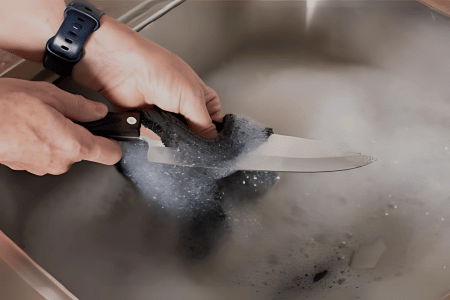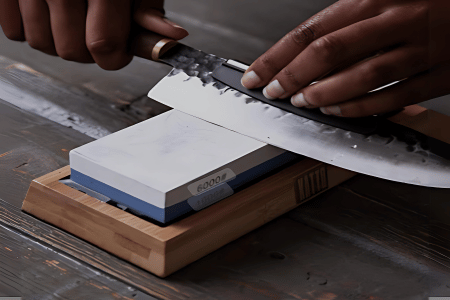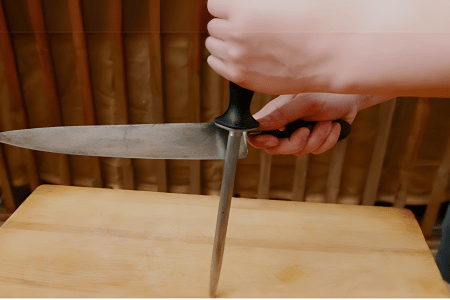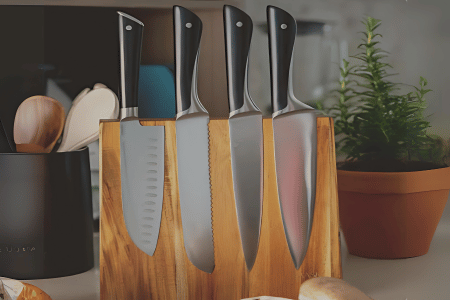
Knives are known to be one of the oldest and most important tools for humans, dating back millions of years. From their early use as stone blades to today’s precision-crafted kitchen tools, knives have evolved into indispensable instruments for cooking, crafting, and daily usage.
In real life, knives play a role by handling various kitchen activities such as slicing meats and vegetables or even the most precise tasks like peeling fruits and carving patterns into food items. Top-tier knives have a higher value in the kitchen due to their versatility and durability.
Let’s look for the attributes required to be checked while selecting the knives for the kitchen.
A knife is a composition of blade, handle for the grip and balance, and other parts like the bolster (finger guard), and rivets to hold the handle in place. The choil and butt are the parts that enhance the control.

The material of the blade is something that gives its feel with respect to the sharpness and durability. Here are some of the options with different materials :
The handle must be easy to hold, as it’s easy to control and also good for safety. Some popular handle materials :
A balanced knife is required for a good grip and less strain to the hands.
Maintenance is the essential point to keep in mind as it determines the lives of the product; sharp knives are easy to clean, and it saves time and energy in the long run.
A good kitchen does not require hundreds of knives. Most cooking tasks can be carried out easily with just a few important tools. Here are the must-have knives that are used in most kitchens :











Let’s look at some of the safety tips which are essential for safe handling, and preventing injuries.
Proper maintenance is required for each and every thing, whether it is a knife or any other product, to keep the product for a longer time. Here are some tips :
Knives need to be properly cleaned with the mild soap and water immediately after the use. Manually wash the knives, as dishwashers can damage the blades and handles of the knives.


A sharpening stone or the electric sharpener can be used to restore the edges, but limited to once or twice a year.
When the knife is used for a longer period, the edges of the blade become slightly misaligned and does not give the satisfaction in work. Honing helps in realigning the edges of the blade to ensure that the knife stays sharp and effective and give the best results. Honing and sharpening are two different processes, sharpening is done less frequently but honing can be done on regular basis.


To maintain the real sharpness of the knife, it needs to be kept in the proper storage. Either use a knife block, magnetic strip or the drawers to keep the knife straight to avoid damages.
Mastering the knife skills gives you efficiency at work and also ensures a safe environment. Here are some of the techniques you can notice :
Let’s look at the difference between professional and household knives.
Professional Knives :
Household Knives :
A chef or the homemaker should be aware of the upgrade of the knife collection, as this will advance your cooking skills.
you can reduce time in kitchen by saving preparation time, that can be done by selecting right tools, and knife is one the main tool. With the knowledge I shared with you, I am sure you can enjoy time not only in kitchen but can enjoy it outside the kitchen as well. The attributes discussed above will help you in selecting, using, and caring for the knives and will definitely help you in terms of making smart decisions that will meet your needs and budget. Start your journey with the basics and then grow your collection gradually as your skills are upgraded, because a right knife makes all the difference in the world.